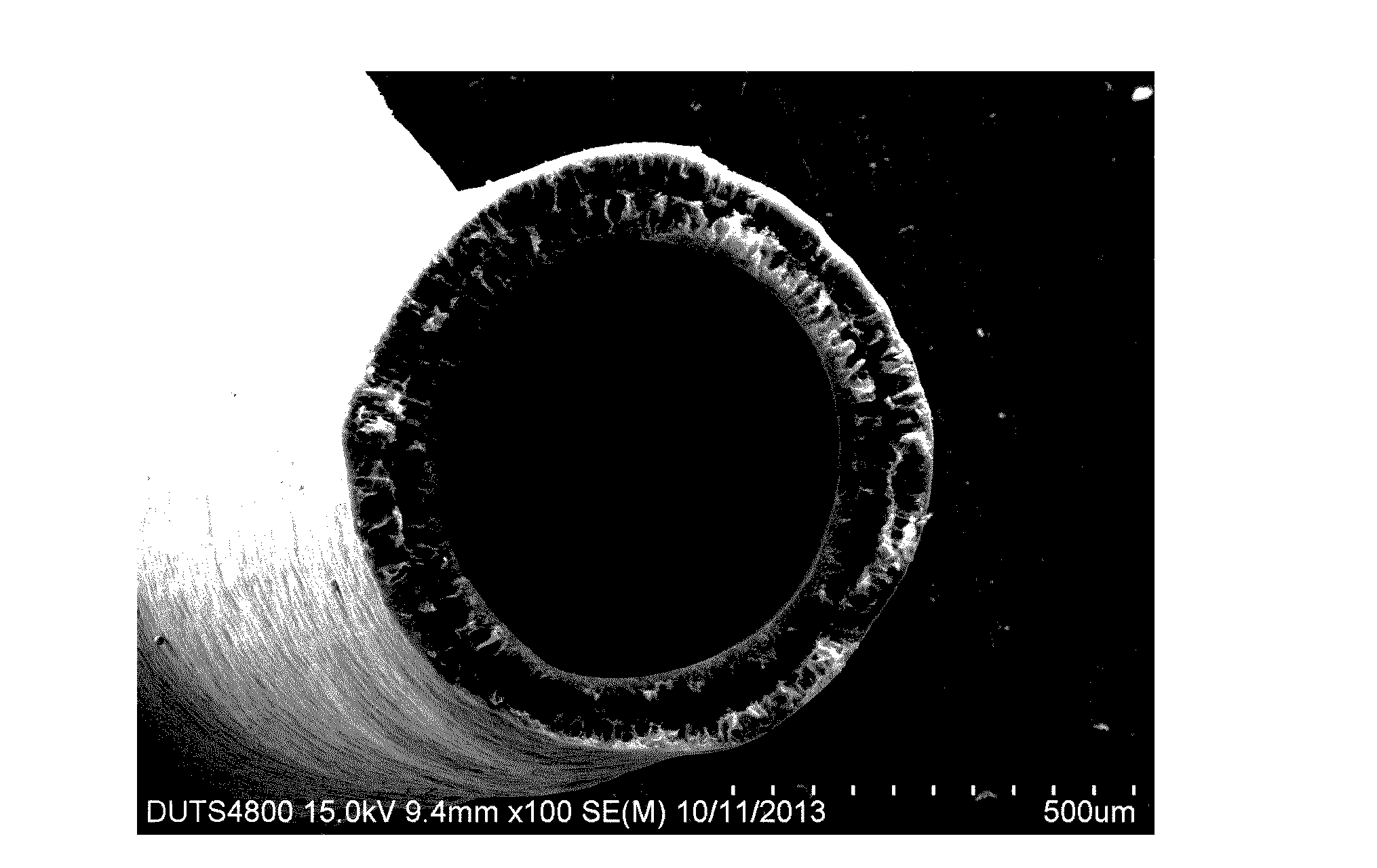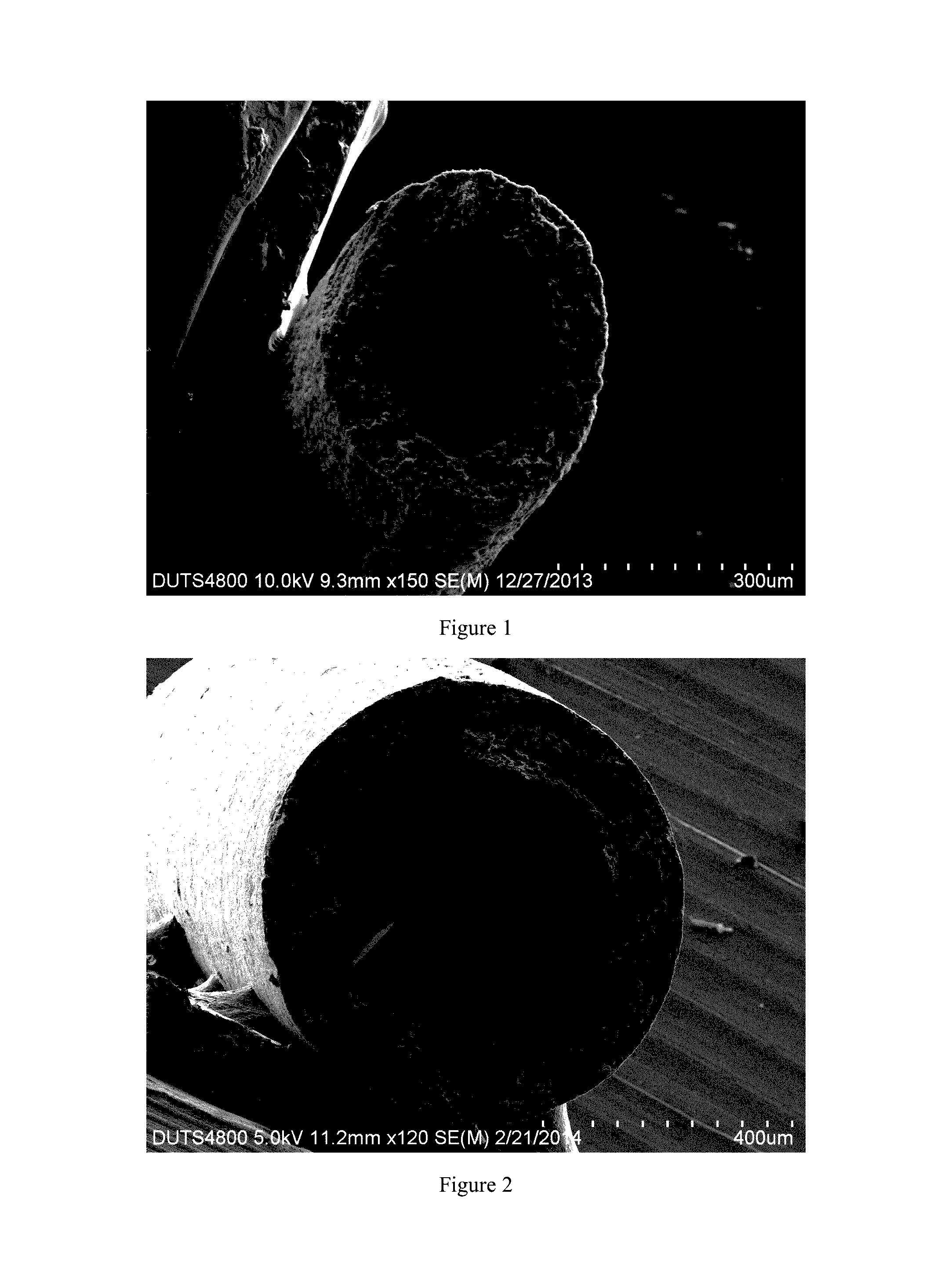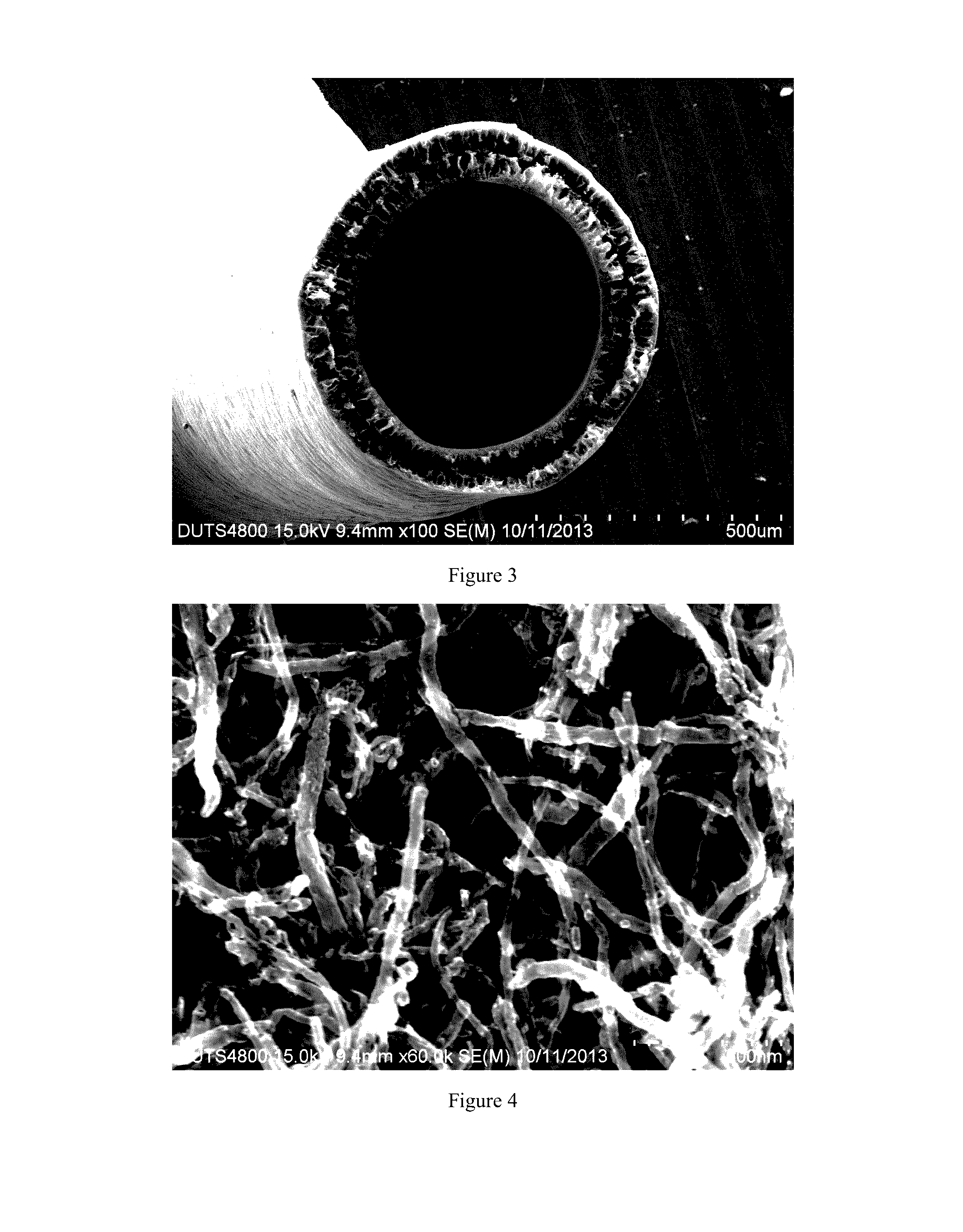A method for the high-throughput preparation of carbon nanotube hollow fiber membranes
a hollow fiber membrane, high-throughput technology, applied in membrane technology, membrane technology, chemistry apparatus and processes, etc., can solve the problems of low flux and single function, low efficiency, and inherent fouling of commercial polymers, and achieve high porosity, high water flux, and high efficiency
- Summary
- Abstract
- Description
- Claims
- Application Information
AI Technical Summary
Benefits of technology
Problems solved by technology
Method used
Image
Examples
example 1
[0022]Surface modification of CNTs: About 10 g pristine multiwalled CNTs with 60˜100 nm in outer diameters are added into a mixture of concentrated sulfuric acid and nitric acid (3:1, v / v). The mixture is then heated at 60° C. for 4 h. Subsequently, CNTs are recovered by filtration after diluting the concentrated acid solution, followed by being washed with water until pH of the filtrate is nearly neutral. At last, the recovered CNTs are dried at 60° C. for 12 h.
[0023]Wet-spinning process: Typically, 5.0 g surface-functionalized CNTs and 2.5 g PVB are dispersed and dissolved, respectively, in 50 g N, N-dimethyl formamide to form homogeneous spinning solution. The spinning solution as shell liquid and water as core liquid are squeezed at flow rates of 15 mL / h and 7 mL / h, respectively, into water through a spinneret to form CNT / PVB hollow fibers.
[0024]Calcination: The obtained CNT / PVB hollow fibers are dredged up from the water after being washed for several times, followed by being d...
example 2
[0026]Surface modification of CNTs: About 10 g pristine multiwalled CNTs with 60˜100 nm in outer diameters are added into a mixture of concentrated sulfuric acid and nitric acid (2:1, v / v). The mixture is then heated at 40° C. for 4 h. Subsequently, CNTs are recovered by filtration after diluting the concentrated acid solution, followed by being washed with water until pH of the filtrate is nearly neutral. At last, the recovered CNTs are dried at 60° C. for 12 h.
[0027]Wet-spinning process: Typically, 5.0 g surface-functionalized CNTs, 1.5 g PVB and 1.0 g PAN are dispersed and dissolved, respectively, in 80 g N, N-dimethyl formamide to form homogeneous spinning solution. The spinning solution as shell liquid and water as core liquid are squeezed at flow rates of 20 mL / h and 10 mL / h, respectively, into water through a spinneret to form CNT / PVB / PAN hollow fibers.
[0028]Calcination: The obtained CNT / PVB / PAN hollow fibers are dredged up from the water after being washed for several times,...
example 3
[0030]Surface modification of CNTs: About 10 g pristine multiwalled CNTs with 60˜100 nm in outer diameters are added into a mixture of concentrated sulfuric acid and nitric acid (3:1, v / v). The mixture is then heated at 60° C. for 6 h. Subsequently, CNTs are recovered by filtration after diluting the concentrated acid solution, followed by being washed with water until pH of the filtrate is nearly neutral. At last, the recovered CNTs are dried at 60° C. for 12 h.
[0031]Wet-spinning process: Typically, 5.0 g surface-functionalized CNTs and 1.0 g PVB are dispersed and dissolved, respectively, in 50 g N, N-dimethyl formamide to form homogeneous spinning solution. The spinning solution as shell liquid and water as core liquid are squeezed at flow rates of 15 mL / h and 10 mL / h, respectively, into water through a spinneret to form CNT / PVB hollow fibers.
[0032]Calcination: The obtained CNT / PVB hollow fibers are dredged up from the water after being washed for several times, followed by being ...
PUM
| Property | Measurement | Unit |
|---|---|---|
| outer diameters | aaaaa | aaaaa |
| flow rates | aaaaa | aaaaa |
| flow rates | aaaaa | aaaaa |
Abstract
Description
Claims
Application Information
 Login to View More
Login to View More - R&D
- Intellectual Property
- Life Sciences
- Materials
- Tech Scout
- Unparalleled Data Quality
- Higher Quality Content
- 60% Fewer Hallucinations
Browse by: Latest US Patents, China's latest patents, Technical Efficacy Thesaurus, Application Domain, Technology Topic, Popular Technical Reports.
© 2025 PatSnap. All rights reserved.Legal|Privacy policy|Modern Slavery Act Transparency Statement|Sitemap|About US| Contact US: help@patsnap.com



